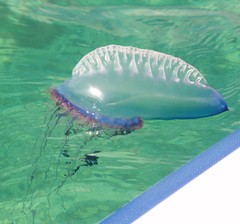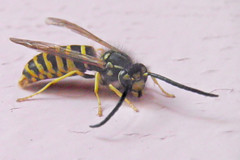When thinking of killers in the wild, a few specific animals instinctively come to mind. Bears, snakes, sharks, big cats, and spiders are the species with nasty reputations. They’re well-known, well-feared, and everyone from outdoor lovers to homebodies know that they should be avoided. Meanwhile other even more dangerous animals go unnoticed, despite their dangerous nature. The following five critters are true killers in the wild, despite their unassuming looks.
The Poison Dart Frog
 These little, admittedly cute frogs really earn their name. Typically a little more than a centimeter in length, one of these tiny amphibians carries enough poison to kill enough poison to kill over a dozen adult humans. What’s worse, there’s no bite required delivery. The poison is secreted through their skin, so all it takes is one deadly touch. Though they’re pretty versatile in coloration, Poison Dart Frogs are almost always brightly colored with neon-looking blues, yellows, and reds. They’re also native to South America, so there’s no need to threat unless you’ll be venturing abroad.
These little, admittedly cute frogs really earn their name. Typically a little more than a centimeter in length, one of these tiny amphibians carries enough poison to kill enough poison to kill over a dozen adult humans. What’s worse, there’s no bite required delivery. The poison is secreted through their skin, so all it takes is one deadly touch. Though they’re pretty versatile in coloration, Poison Dart Frogs are almost always brightly colored with neon-looking blues, yellows, and reds. They’re also native to South America, so there’s no need to threat unless you’ll be venturing abroad.
Feral Hogs
Native to the Midwest and Southern portions of the United States, feral hogs have become a real problem in several areas. Often exceeding 200 pounds, they look like hairier, less pink versions of the domesticated pig. And when threatened or guarding baby hogs, they have a reputation for turning aggressive. Additionally, they’re known carriers of nasty diseases such as brucellosis and trichinosis. Several states in which feral hogs live have instituted a “shoot-on-sight” policy in response to their widespread population growth.
The Portugese Man O’ War
 Beach-goers typically keep a watchful eye out for fins in the water, which is good. But what they often fail to see are floating jellyfish – mostly because they look like a milk jug or other piece of debris. The Portugese Man O’ War is found in waters worldwide, but is especially common in the Gulf of Mexico. Shaped much like a transparent liver, its spindly tentacles extend down into the water, sometimes brushing unsuspecting swimmers. Tentacle stings from this species are extremely painful, and can cause vital organ interruptions or even death in those sensitive to its venom.
Beach-goers typically keep a watchful eye out for fins in the water, which is good. But what they often fail to see are floating jellyfish – mostly because they look like a milk jug or other piece of debris. The Portugese Man O’ War is found in waters worldwide, but is especially common in the Gulf of Mexico. Shaped much like a transparent liver, its spindly tentacles extend down into the water, sometimes brushing unsuspecting swimmers. Tentacle stings from this species are extremely painful, and can cause vital organ interruptions or even death in those sensitive to its venom.
The Yellow Jacket
 Like the jellyfish above, people generally know to keep their distance from bees and wasps. But while most species have large, noticeable nests, this species’ homes lie hidden underground. Their nests can hold adult populations of several thousand. And if you step on or near one of them, the whole colony will likely come after you. To make matters worse, they can sting more than once, are notoriously aggressive, and will pursue a moving target. They’re found all over the United States, particularly in the South. So if you’re camping in Dixie, be sure to watch where you walk.
Like the jellyfish above, people generally know to keep their distance from bees and wasps. But while most species have large, noticeable nests, this species’ homes lie hidden underground. Their nests can hold adult populations of several thousand. And if you step on or near one of them, the whole colony will likely come after you. To make matters worse, they can sting more than once, are notoriously aggressive, and will pursue a moving target. They’re found all over the United States, particularly in the South. So if you’re camping in Dixie, be sure to watch where you walk.
The Whitetail Deer
 The whitetail deer, one of the most popularly hunted animals in the U.S., is often seen as a victim rather than an antagonist (thanks, “Bambi”). But not only are they often dangerous to motorists, they can also turn aggressive during the rut. In fact, several deer attacks involving hunters, hikers, and campers occur every year – sometimes proving fatal. So the next time you stumble on a buck in the Fall, it’s probably a better idea to turn around than bust out the camera and see how close you can get.
The whitetail deer, one of the most popularly hunted animals in the U.S., is often seen as a victim rather than an antagonist (thanks, “Bambi”). But not only are they often dangerous to motorists, they can also turn aggressive during the rut. In fact, several deer attacks involving hunters, hikers, and campers occur every year – sometimes proving fatal. So the next time you stumble on a buck in the Fall, it’s probably a better idea to turn around than bust out the camera and see how close you can get.


It simply is amazing what can hurt or even kill you. The big creatures like bears or big cats come to mind first, but we all tend to forget about those little things like the yellow jackets which can be more deadly.
Thanks for sharing this list. I really agree with you when you said that hikers or campers overlook the dangers of other animals around because they only watch out for the popular ones. I think that everybody should be aware about this because we may not know when we will have the “chance” to encounter them.